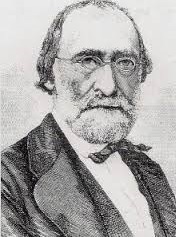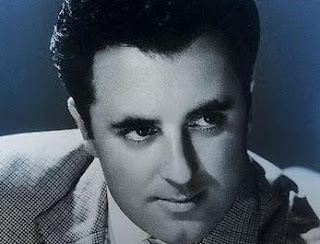Premier stayed in power by creating coalitions
 |
| Agostino Depretis served three terms as Italy's premier in the last 19th century |
He had been the founder and main proponent of trasformismo, a method of making a flexible centrist coalition that isolated the extremists on the right and the left.
Depretis served as Prime Minister three times between 1876 and his death.
He was born in 1813 in Mezzana Corti, a hamlet that is now part of Cava Manara, a comune in the province of Pavia. After graduating from law school in Pavia, Depretis ran his family’s estate.
In 1848, the year of revolutions in Europe, he was elected as a member of the first parliament in Piedmont. He consistently opposed Camillo Benso, Count of Cavour, the Prime Minister of Piedmont Sardinia.
A disciple of the pro-unification activist Giuseppe Mazzini, Depretis was nearly captured by the Austrians while smuggling arms into Milan, but he did not take part in the 1853 uprising planned by Mazzini in Milan. It is thought he predicted it would fail.
Depretis briefly served as Governor of Brescia in Lombardy after Cavour’s resignation in 1859.
 |
| Depretis was a master at making coalitions from the Right and Left |
He became leader of the Left after the death of Urbano Rattazzi in 1873 and he was invited to become premier for the first time in 1876.
For the next 11 years he was the dominant force in Italian politics. A scandal in March 1878 brought down his first Government before he could introduce liberal reforms, but he returned to power later in 1878 and formed a Government that lasted for the next eight months.
In 1881 he formed another Government that lasted for more than six years. The main reform he achieved was the extension of suffrage from two per cent to seven per cent of the population of Italy.
Depretis managed to stay in office by perfecting the art of trasformismo, taking ministers from both the right and the left to form coalitions.
In 1882 Depretis signed the Triple Alliance, which allied Italy with Austria-Hungary and Germany. He was then persuaded to colonise Africa, but when 500 Italian soldiers were killed by Ethiopians at the Battle of Dogali in January 1887, his Government resigned.
Depretis was chosen as Prime Minister again in April but, because he was suffering badly from gout, he moved to live in Stradella, near Pavia. He died there while still in office on 29 July, making him the fourth longest-serving Prime Minister in Italian history after Benito Mussolini, Giovanni Giolitti and Silvio Berlusconi.
 |
| The church of San Lorenzo Martire in Mezzana Corti |
Mezzana Corti, where Agostino Depretis was born, is a small village - a frazione - that is now part of the municipality of Cava Manara in the province of Pavia. Cava Manara was originally known as Cava Taverna, but was renamed Cava Manara in 1863 in honour of Luciano Manara, an Italian patriot who was killed in battle at the age of 24.
| The Monument to Agostino Depretis in Stradella |
Stradella, where Agostino Depretis died, is part of the Oltrepò Pavese in the province of Pavia, an area to the south of the River Pò and therefore oltre - beyond - the Pò. Stradella was once an important centre for the production of accordions and there is still a museum in the town dedicated to the instrument, Il Civico Museo della Fisarmonica Mariano Dallapè di Stradella. There is a monument to Deprestis in Piazza Vittorio Veneto.
More reading:
Giuseppe Mazzini, the thinking man's revolutionary who is seen as a hero of the Risorgimento
How Cavour became the first Prime Minister of a united Italy
The Five Days of Milan
Also on this day:
1644: The death of Pope Urban VIII, whose extravagance led to disgrace
1883: The birth of Benito Mussolini
1900: The birth of Teresa Noce, the partisan who became a campaigner for the rights of working women
Home





















